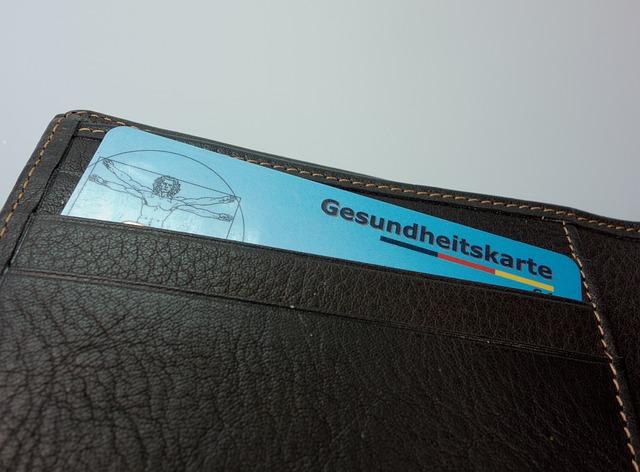If you’re the proud owner of a used or vintage RV, you know the unique joy and freedom that comes with hitting the road in a home on wheels that’s full of character and history. But alongside the adventure comes the important task of protecting your investment. Securing insurance for a used or vintage RV can be a bit more complex than insuring a newer model, due to factors like the vehicle’s age, condition, and sometimes rarity. In this article, we’ll walk you through everything you need to know to find the right coverage, understand your options, and ensure your beloved RV stays protected no matter where the road takes you. Whether your RV is a classic beauty or a reliable second-hand ride, these tips will help you navigate the insurance process with confidence.
Table of Contents
- Understanding the Unique Challenges of Insuring Used and Vintage RVs
- Evaluating Coverage Options Tailored for Classic and Older Recreational Vehicles
- Tips for Accurately Valuing Your Vintage RV for Insurance Purposes
- Collaborating with Specialty Insurers to Get the Best Protection and Rates
- The Way Forward
Understanding the Unique Challenges of Insuring Used and Vintage RVs
Insuring a used or vintage RV comes with its own set of complexities that differ greatly from new motorhomes. Unlike brand-new models, older RVs often have depreciated value and may lack comprehensive repair records, making it trickier for insurers to assess risk accurately. Additionally, vintage RVs often have unique parts and custom modifications that may not be readily available or covered under standard policies. This specialized nature can lead to higher premiums or limited coverage options, requiring owners to thoroughly research and possibly opt for tailored insurance plans that reflect the true value and condition of their vehicle.
When exploring insurance options, several key factors should be considered to navigate these challenges effectively:
- Appraisal requirements: Many insurers will require a professional appraisal to determine the RV’s fair market value and condition.
- Usage restrictions: Vintage RV insurance often includes mileage limits or specific usage clauses that could affect your coverage.
- Repair and replacement coverage: Because parts can be rare, specialized policies may offer agreed value coverage or were designed to handle restoration-related claims.
- Storage and security conditions: Some insurers mandate certain security measures when the RV is not in use to mitigate risk.
Understanding these nuances before purchasing insurance empowers you to select a policy that not only safeguards your investment but also honors the uniqueness of your cherished RV.
Evaluating Coverage Options Tailored for Classic and Older Recreational Vehicles
Tips for Accurately Valuing Your Vintage RV for Insurance Purposes
Knowing the true value of your vintage RV is crucial when selecting the right insurance coverage. Start by researching recent sale prices of similar models, paying close attention to year, make, and condition. Additionally, professional appraisals can provide an authoritative figure that reflects the RV’s current market worth—this is especially valuable for rare or highly customized units. Keep in mind, original features, restorations, and maintained condition significantly impact value and should be well documented with photos and receipts.
When preparing your valuation data for insurers, consider including:
- The RV’s history and any restoration projects completed
- Market trends for vintage and classic RVs
- Comparable listings on specialty auction or enthusiast sites
- Maintenance records and mileage details
Presenting a comprehensive picture helps ensure you are neither underinsured nor paying for coverage that exceeds your RV’s true value.
Collaborating with Specialty Insurers to Get the Best Protection and Rates
Teaming up with specialty insurers is a strategic move when insuring your vintage or used RV. These providers understand the unique value and risks associated with older vehicles, offering tailored coverage that standard insurers might overlook. By working closely with specialty companies, you gain access to policies that consider your RV’s age, rarity, and condition, ensuring you’re not underinsured. Their expertise also means better advice on necessary endorsements and protections, such as agreed value coverage or spare parts reimbursement, which are crucial for classic RVs.
To get the most from these partnerships, start by:
- Researching niche insurers that specialize in classic or vintage RV insurance.
- Obtaining multiple quotes to compare not just price but the depth of coverage offered.
- Discussing your RV’s specific features and usage patterns honestly to ensure accurate risk assessment.
- Exploring bundling options that might include roadside assistance or storage coverage, often more flexible with specialty insurers.
By engaging directly with specialists who value your RV’s character and potential, you unlock the best protection with competitive rates, putting you in a confident position to enjoy your travels worry-free.
The Way Forward
Securing the right insurance for your used or vintage RV doesn’t have to be a daunting task. By understanding the unique value and needs of your vehicle, doing thorough research, and working with insurers who specialize in classic or older RVs, you can find a policy that provides both adequate protection and peace of mind. Remember, the key is to be proactive—assess your coverage regularly, keep thorough documentation, and don’t hesitate to ask questions. With the right approach, your cherished RV can stay protected on every adventure, allowing you to focus on the joy of the open road. Safe travels!






